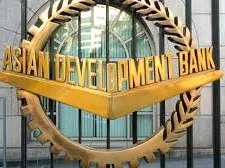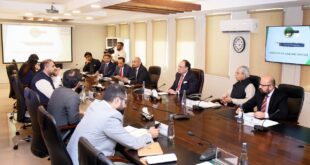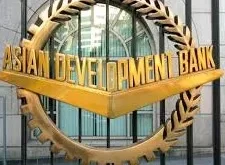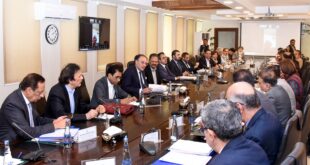
According to the Asian Development Bank (ADB), Pakistan’s economic growth rate is expected to remain at 2.5% in the fiscal year 2025. ADB report further said, it was noted that the growth rate could rise to 3% in the fiscal year 2026. The country’s economic situation has shown signs of improvement, largely due to the International Monetary Fund (IMF)’s Extended Fund Facility (EFF) program.
The statement further highlighted that reforms in tax policy and the energy sector have contributed to greater economic stability. Increased private sector investment and a more stable foreign exchange market are also expected to play a role in driving growth. Moreover, the average inflation rate is projected to decline significantly to 6.0% in fiscal year 2025.
Looking ahead, ADB stated that average inflation may decrease further to 5.8% in fiscal year 2026. Despite these improvements, female labor force participation in Pakistan remains low compared to other countries. For the current fiscal year, economic growth is expected to stay at 2.5%.
ADB also observed that economic growth could increase to 3% in the following fiscal year. Inflation is anticipated to remain around 6% during the current year and is projected to decline to 5.8% in the next.
It is worth mentioning that Pakistan’s economic growth has fluctuated notably over recent years. Following a contraction of –0.2% in 2020, the economy rebounded in 2021 and peaked at 5.0% in 2022. However, growth slowed to 2.5% in 2023, with a modest recovery projected at 3.0% for 2024.
Inflation in Pakistan has remained persistently high. The inflation rate nearly tripled from 12.2% in 2022 to a staggering 29.2% in 2023. Although a slight decrease to 23.4% is projected for 2024, inflation continues to be a critical concern for both policymakers and the general public.
According to ADB, reforms are helping Pakistan’s economy achieve greater stability and growth. The implementation of strict macroeconomic policies and structural reforms could pave the way for sustained progress. While remaining under the IMF loan program, Pakistan’s economic performance is expected to improve.

Private sector investment is likely to contribute positively to growth during the current fiscal year. Additionally, increased remittances, a reduction in the policy rate, and easing inflation are expected. Stability in global oil and commodity prices has also played a role in helping to control inflation domestically.
The statement also noted that Pakistan continues to lag behind other countries in terms of female labor force participation. However, encouraging more women to enter the workforce could enhance overall productivity. Education and vocational training can further help in developing women’s skills and increasing their economic contribution.
It is also significant to mention that ADB, in its broader regional outlook, stated that economies in developing Asia and the Pacific are projected to grow by 4.9% this year, a slight decline from 5.0% last year.
 BeNewz
BeNewz




